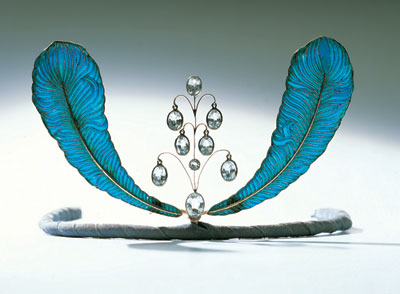I have been working so hard lately, it’s been ridiculous, but for my treat, I bought this 1880 gilt French tiara, with paste stones original to the piece, and I got it today, tried it on, and I just leapt to the ceiling with joy.
My hair is a bit frizzy, and I am looking up at my James. Imperfections make the human being? :-) I’m wearing my grandmother’s costume jewelry that I kind of put together to make my own parure. C’est la vie, world. You may refer to auction #160199874611. I have never had a tiara like this. I am just so happy!
Category Archives: Tiara
What A Difference A Century Makes
Sothebys is having an auction of magnificent jewels, and as I was looking over the tiaras, I couldn’t help but be struck by the contrast between one made in 1870 and another made in 1970.
The Victorian tiara is made of open work panels of stylised Greek key and foliate scrolls, whereas the 70’s piece is a hinged crescent of elongated panels. What a difference a century makes. However, I have to admit, I totally see a Star Wars Princess in that 1970’s tiara. ;-)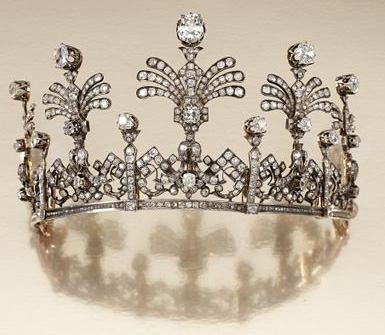

Tiara Leaves
During the Victorian period, archeological discoveries in Rome and Greece captivated the imagination of jewelers. Leaves found on ancient headpieces became a favorite ornament in tiaras. Here are four lovely examples.
This French tiara, c. 1820, is set in a patterned, gilded frame with faceted crystals. It depicts a spray of hyacinth leaves with raised flower buds. It sold last year for 1000 GBP from a dealer in London.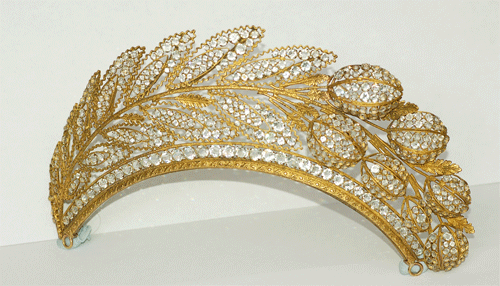
This English gilt metal tiara and brooch has flowering sprays of myrtle. On the blue velvet cushion that came with it, silver thread was embroidered to read “d.11ten Januar. 1867.” It sold at Sothebys in London for 4,320 GBP.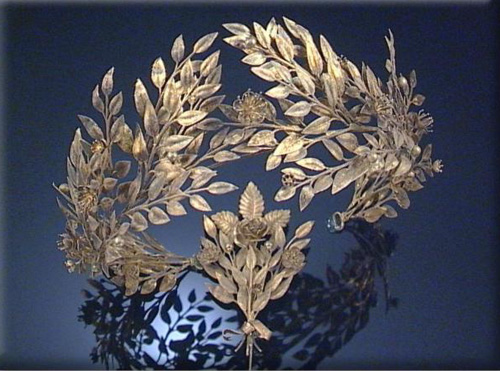
This Castellani Archeological Revival Gold tiara, c. 1870, is a simple gold branch bearing sprigs of olive leaves, with circular openings at either end for ribbons. It was exhibited at The Bard Graduate Center in New York, Somerset House in London, and Villa Giulia in Rome, and sold for $19,200 at Sothebys.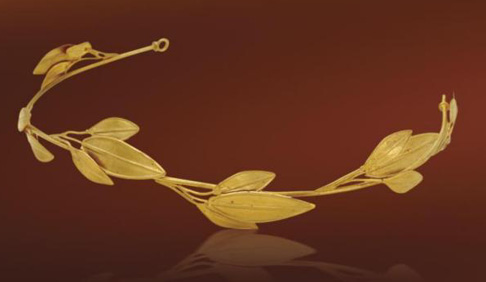
Last is this diamond tiara, designed as a spray of fern leaves set with cushion-shaped and rose diamonds. The fitted case is by J & P Bapst & Fils Joalliers, 25 Rue du Faubs St Honore, Paris, c. 1870. Sale Price: 82,700 GBP at Sothebys.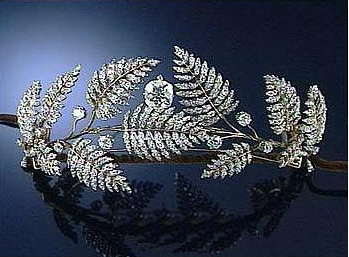
Winged Tiaras
Whether they were inspired by Wagner’s flying Valkyries, or the Aesthetic and Revivalist Movements, some tiaras had wings. Here are three beautiful examples.
This tiara consists of a a pair of wings on a frame, feathers closely set with diamonds, and patches of translucent blue enamel. They are adjustable to any angle and can be taken off the frame to wear as brooches, individually or as a pair. Women would wear a tiara like this to a performance of a Wagner opera in Paris or London c. 1905.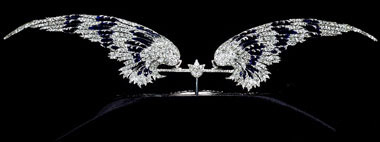
From a Sotheby’s auction, this British Revivalist tiara was designed as a pair of wings pavé-set with diamonds, the tips of translucent green enamel, flanking a star ruby cabochon, supported by a pair of diamond-set coiling serpents with small round cabochon ruby eyes. It was made by Carlo and Arthur Giuliano, c. 1895. Sold for $36,000 on Dec. 6, 2006.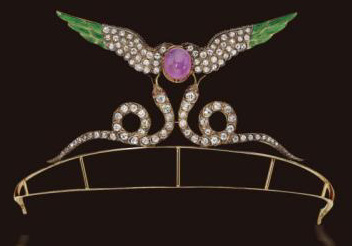
From The Tadema Gallery, this rare Child & Child tiara from the Aesthetic Movement is made of gold, silver, plique-a-jour enamel and crystal. It has a monogram of two C’s and a sunflower and was made c. 1895. It is listed in a number of books, including Two Centuries of Tiaras, Museum of Fine Arts, Boston. Price Range: 20,000 UKP and up. 